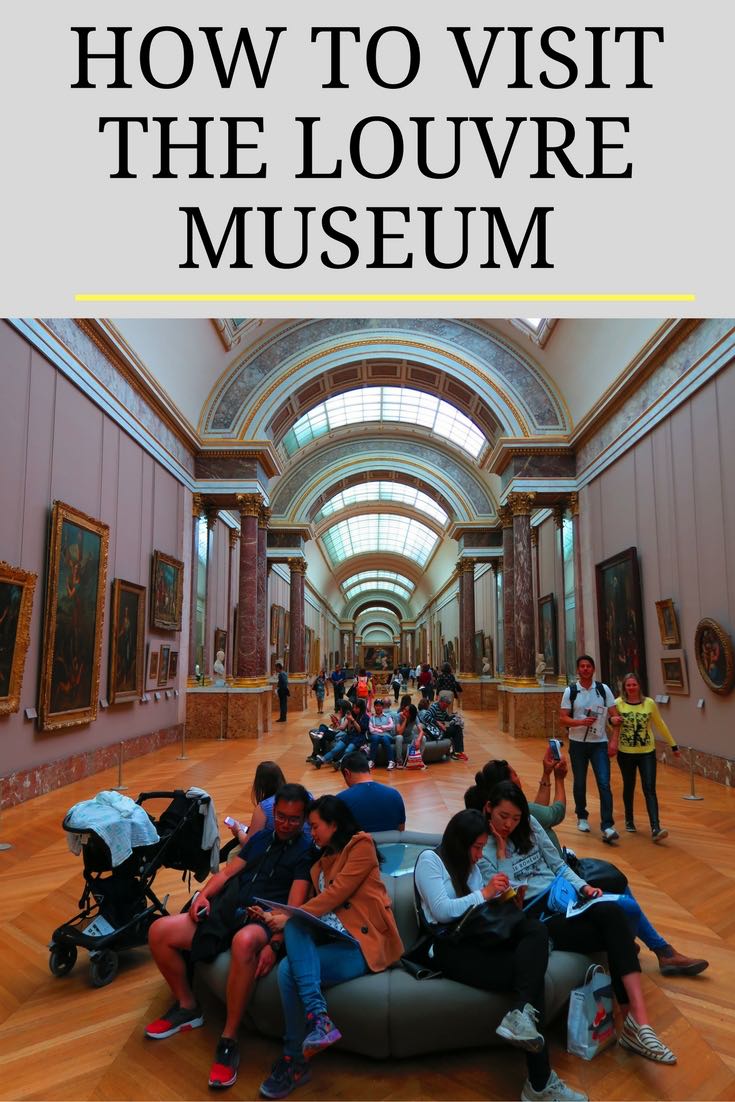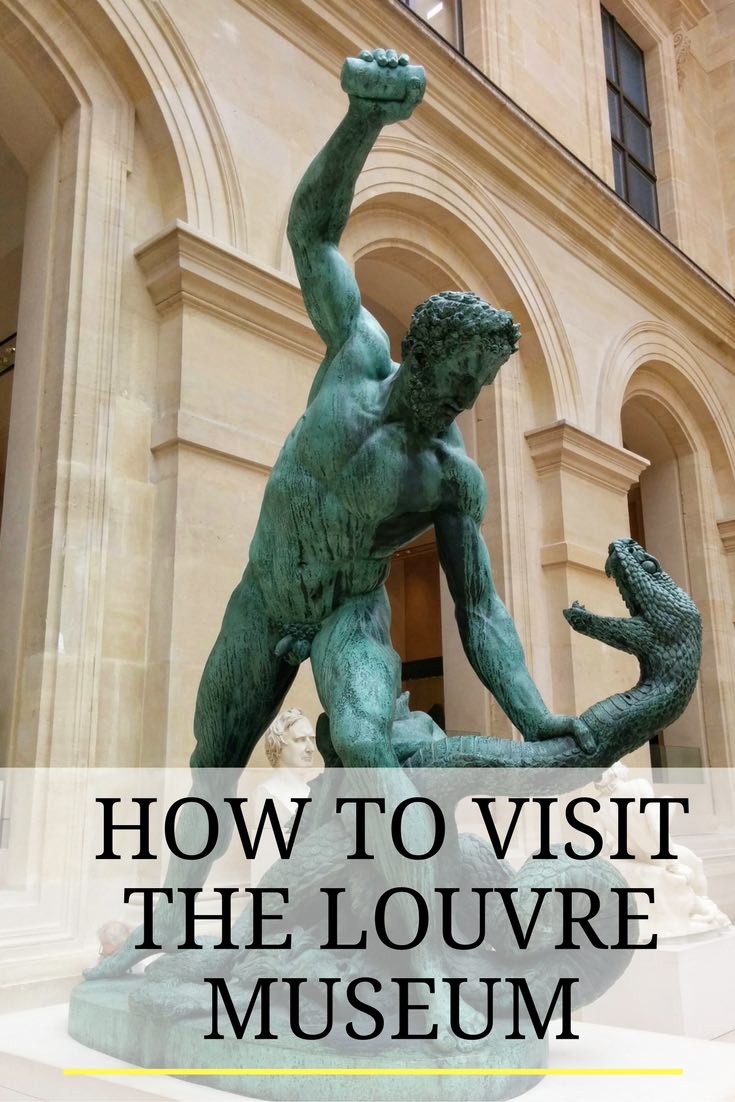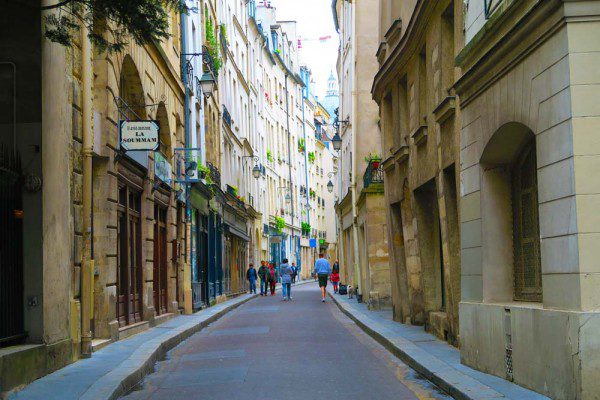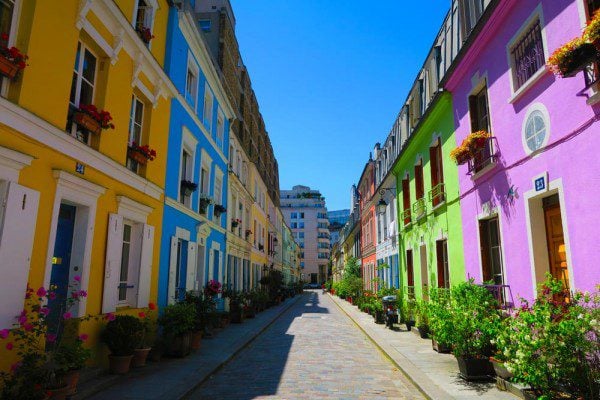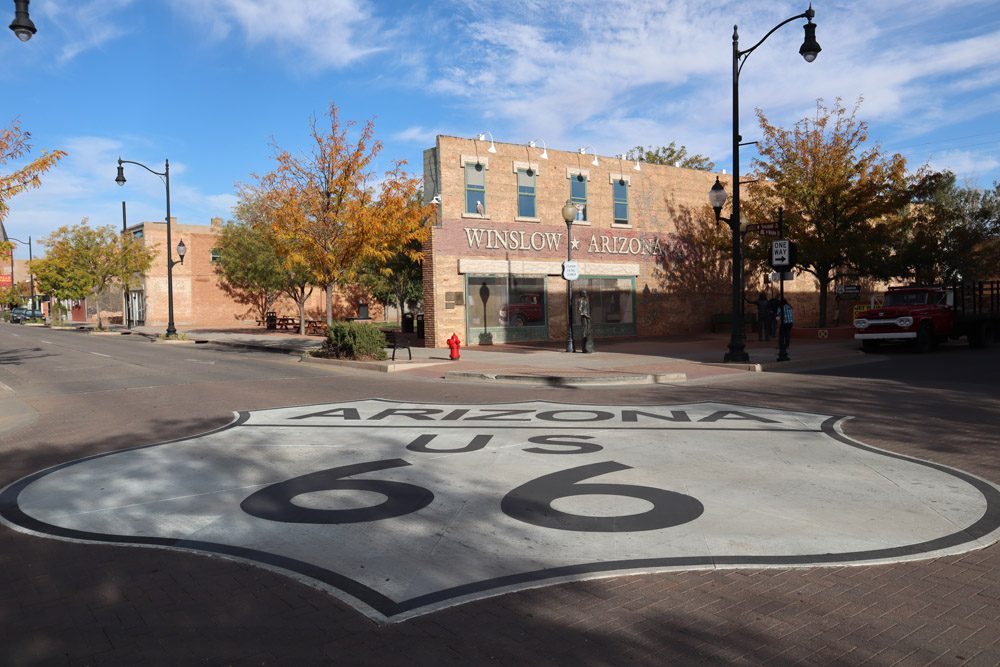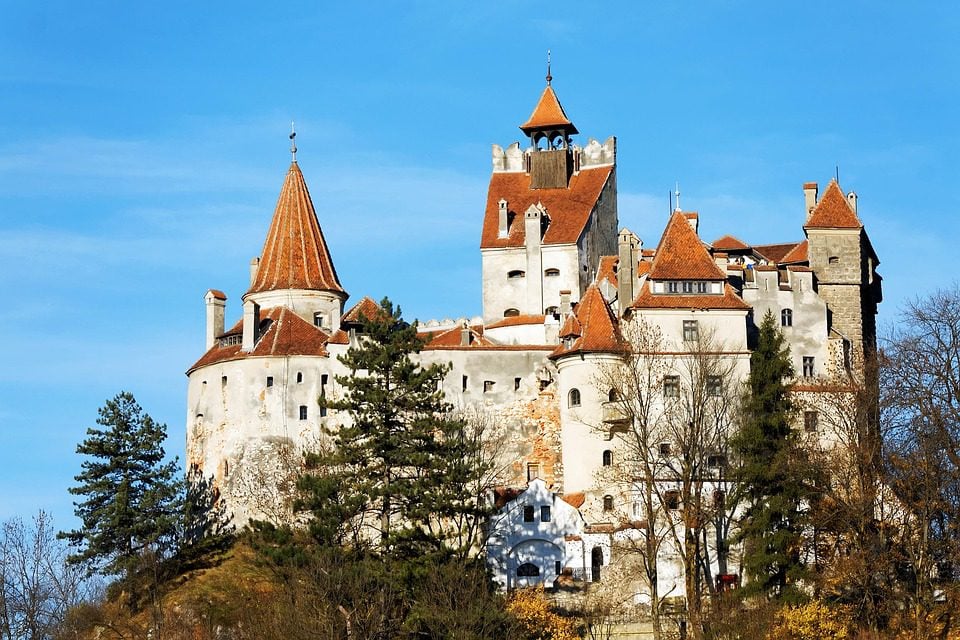How To Best Visit The Louvre Museum
Synonymous with Paris, the Louvre Museum is like no other on earth. In a city that is literally one giant museum, the Louvre stands out as the marquee museum and it simply cannot be missed. This guide covers how to best visit the Louvre Museum, exploring section by section so that you can choose what you want to focus on when you visit the Louvre! This can be quite a challenging task so it’s best to know what you’re up against.
Heading to Paris?
Plan the perfect trip to Paris with free and in-depth Paris travel guides, including the Best of Paris collection and a guide to all major Parisian neighborhoods.
Why Visit the Louvre Museum?
I must admit that I prefer the outdoors to museums and I’ve even visited Paris several times without venturing inside the world’s largest museum. It was only when I moved to Paris for three months that I finally got around to exploring the city’s unrivaled museums like the Louvre, the nearby Musée d’Orsay, Musée Jacquemart-André, and many others. The daunting task of spending a few precious hours inside a museum was beyond me but there were no excuses this time around.
The largest museum in the world, the Louvre sits on the site of a massive former palace. It’s almost as beautiful on the outside as it is on the inside. It is said that as big as the museum is, only a fraction of the collection is actually on display at any given time!
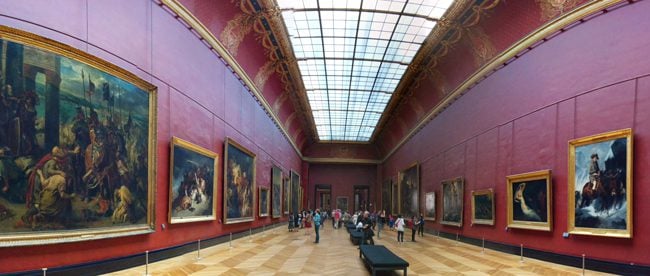
Since its opening in the late 18th century, it’s been the home of some of the world’s finest works of arts & ancient artifacts. Many of those made their way to the Louvre via Napoleon’s regional quests. Some are on such a grand scale, it’s hard to imagine how they were even transported here!
Visitors to the Louvre will definitely not be disappointed, though they will certainly leave tired. This place is simply massive. Highlights include an incredible collection of classical, neoclassical, and renaissance paintings that are simply out of this world. Some of these paintings are so large, it’s difficult to understand how humans created them hundreds of years ago. Other highlights include a rich collection of sculptures and artifacts from Ancient Greece, Egypt, Persia as well as magnificent Napoleonic rooms – among so much more! The Louvre is simply not to be missed.
Tips for Visiting the Louvre Museum
Along with tips in the next sections of this post, here are a few additional general tips for visiting the Louvre:
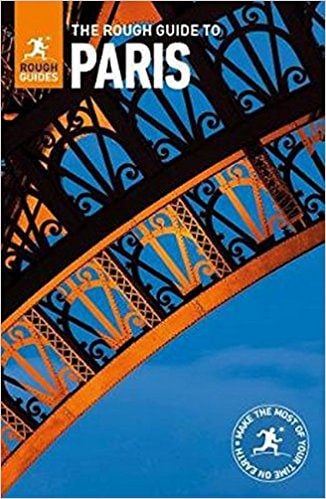
- Before you go: pick up your copy of The Rough Guide To Paris . Together with this guide to seeing the Louvre, it’ll be your best friend in The City of Lights.
- The rule of thumb when visiting the Louvre is not to attempt seeing it all at once. It’s not humanly possible in fact because this place is just so immense. No matter how tempting it is to cover a lot, after a few hours you’ll start losing your mind and become apathetic to the wonderful works of art (not to mention you’ll be walking quite a few kilometers inside the museum). It’s best to focus on one wing per visit and if you have the time, make multiple trips.
- There is always a massive queue outside the famous glass pyramid and down below in the Carrousel du Louvre entrance (the underground shopping center). This is especially true on weekends, rainy days and free entrance days. I highly recommend buying your ticket in advance online in order to skip the wait in line.
- If you’re really after understanding the artistic and historical backgrounds of the artifacts and holding an audio guide next to your ear is not your thing, consider a guided visit to the Louvre which also includes priority entrance and access to temporary exhibitions.
- The Louvre is one of the top sites in Paris and in a city that gets millions of visitors per year, you can imagine it gets quite busy. Evening visits tend to be a lot more manageable. You’ll have less time inside, but you might find yourself all alone in a room filled with wonderful paintings.
- As is the case in most Parisian museums, most of the explanations are only provided in French. If you’re really into knowing everything about what you see, consider an audio guide (though this will greatly add time to your visit).
- You’ll be walking a lot and if you don’t want to be dependent on the cafes so bring water with you.
- The Louvre is, in fact, a former palace and if you’ve been in Paris for a few days by now, you know that even ‘normal’ architecture in this town is out of this world. Be sure to spend some time glancing at the Louvre from the outside and don’t forget to take your eyes off the paintings once in a while and appreciate the building you’re in! We’ll cover in the sections below architectural highlights that are not to be missed while visiting the Louvre.
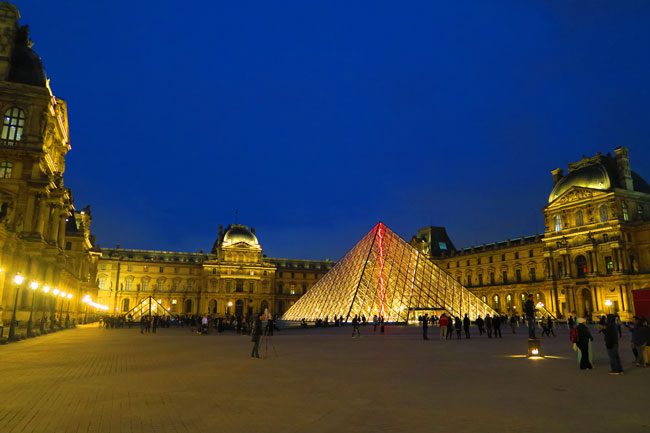
When is the Best Time to Visit the Louvre Museum?
The Louvre is open every day but Tuesday from 9 am to 6 pm except on Wednesdays and Fridays when the museum closes at 9:45 pm. There’s free admission to the Louvre on the first Sunday of the month from October to March. Check out the official opening hours page for a complete schedule of national holidays, when the museum is closed.
Ticket prices to the permanent collections (pretty much all you need) have recently risen and they now cost around ~€15 if you purchase at the museum (not recommended due to the queues) or around ~€17 if you book online (highly recommended). In any case, check the official page to see if you qualify for a discount. I’ve been to several museums in Paris and admission prices are pretty similar. The difference with the Louvre is that you get so much more due to the sheer size so this is really a cultural bargain.
How to Get to the Louvre Museum?
The best way to get to the Louvre is either by walking (as always in Paris) or via the convenient Metro. The two closest Metro stops are at Palais Royal – Musée du Louvre (line 7) and Louvre – Rivoli (line 1). Here’s an official RATP map of the Metro system that you can download in PDF.
The main entrance is at the glass pyramid (above ground) or the Carrousel (below ground). There are also two smaller entrances that some say are a lot less crowded at Passage Richelieu (Richelieu wing) & Porte des Lions (Denon wing)
How Long to Spend at the Louvre Museum?
As mentioned in the tips section, it’s not humanly possible (nor recommended to attempt) to see all of the Louvre in one visit. I would recommend focusing on one wing per visit (maximum one wing + the smaller Sully wing). I’ve visited the Louvre twice and found that after about 3-4 hours, I wasn’t really enjoying it anymore so that would be my own personal limit.
The good news is that there’s plenty more to see around the Louvre as you’re smack in the middle of Paris. Of course, you won’t want to miss the main entrance with the fine palace views and the famous glass pyramid. Right next to you is the Arc de Triomphe du Carrousel, built to commemorate Napoleon’s victories. It was completed 30 years before its big sister over in the Champs Elysees and is today, one of the entrances to the Tuileries Gardens.
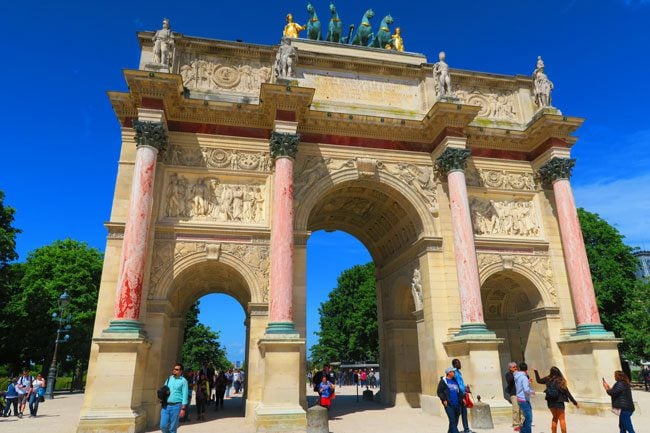
Speaking of the Tuileries Gardens, you won’t want to miss this. It’s one of the top sites in Paris and one of the nicest urban parks in the entire world. The garden goes all the way to Place de la Concorde, where the Champs Elysees begins.
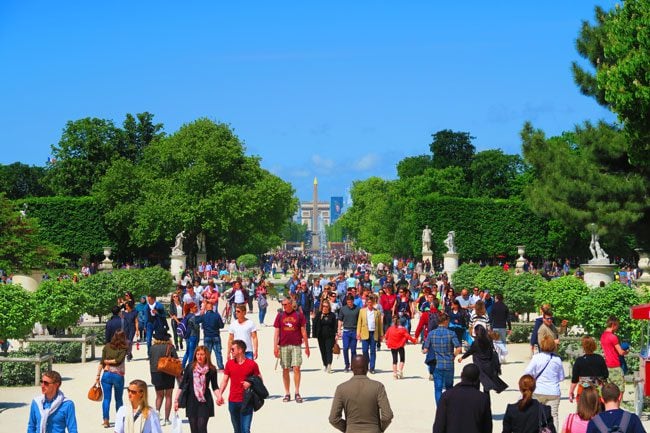
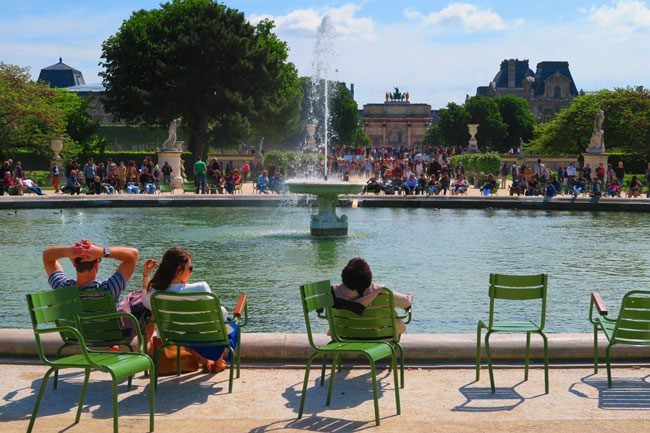
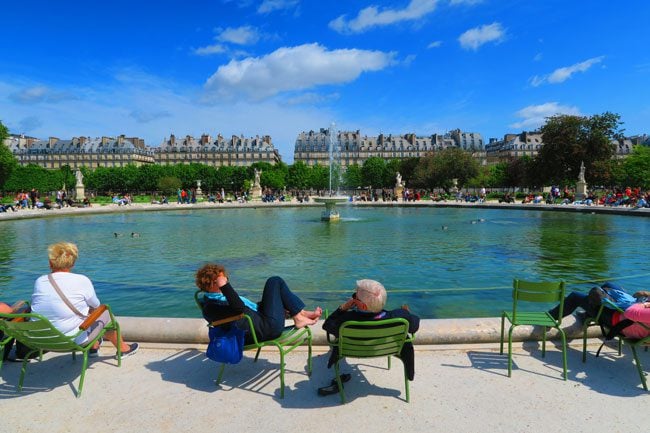
Last but not least, Rue de Rivoli starts to become a major shopping street just east of the Louvre so as you can see, there’s plenty to see and do aside from the museum itself.
What to See at the Louvre Museum?
I’ll briefly cover the highlights of each wing to try and help you determine how to best visit the Louvre museum – and you can pick and choose what interests you.
The Louvre is comprised of three sections built in a semi-rectangular fashion. The two large wings are the Denon and Richelieu wings and the smaller (which is actually its own small square with an inner courtyard) is the Sully wing. As you might be thinking, to get from Denon to Richelieu or vice versa requires a lot of walking as you have to pretty much go from one end of the museum to the other.
The Denon Wing
This wing is probably the most popular one, much because it houses the famous Mona Lisa, though this is definitely not the highlight. Visitors will find here: Italian & Northern European sculptures, Italian & Spanish paintings, large scale French paintings and Roman sculptures & antiquities.
Italian Sculptures
One of the first highlights of the Denon wing is the Galerie Michel Ange (ground floor), a long marble-floored gallery containing Italian masterpieces by the likes of Michelangelo and Giambologna. The gallery itself is breathtaking and at its end, you’ll reach a grand staircase taking you up to the paintings section or down below to an additional and at times secluded section, containing additional Italian religious and Gothic sculptures.
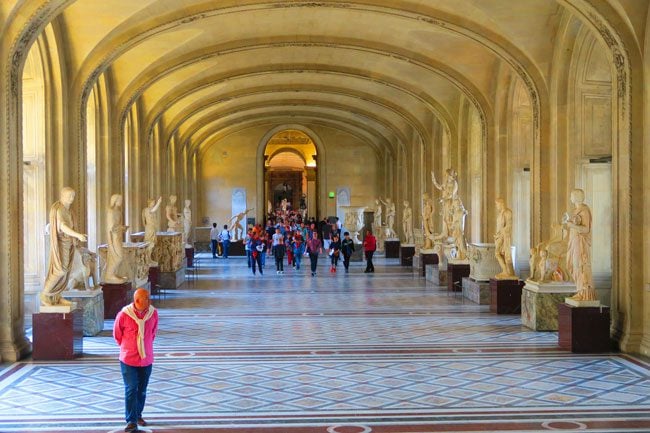
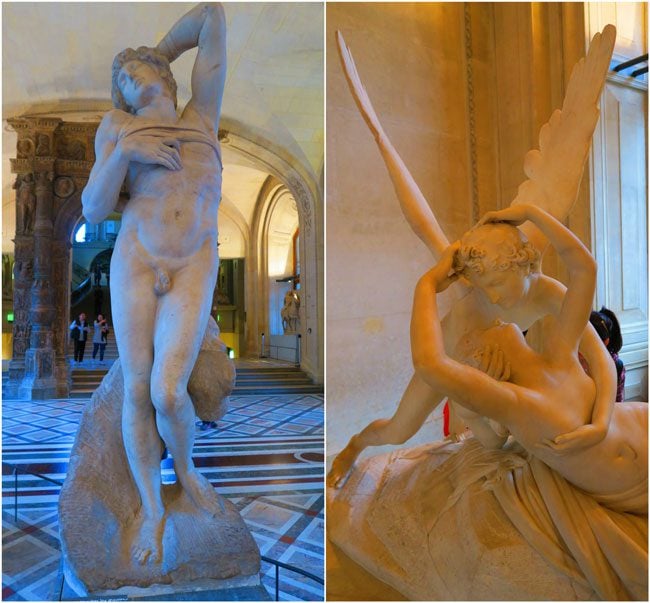
Italian Paintings
Deservingly taking up the bulk of the first-floor space of the Denon wing, the Italian painting collection will really push your senses to their limits. You won’t be able to miss the Grand Galerie, an impressive hall filled with exquisite Italian paintings, mainly depicting religious scenes. Also on display are great works from the time of the renaissance – oh the renaissance, what a great period in human history!
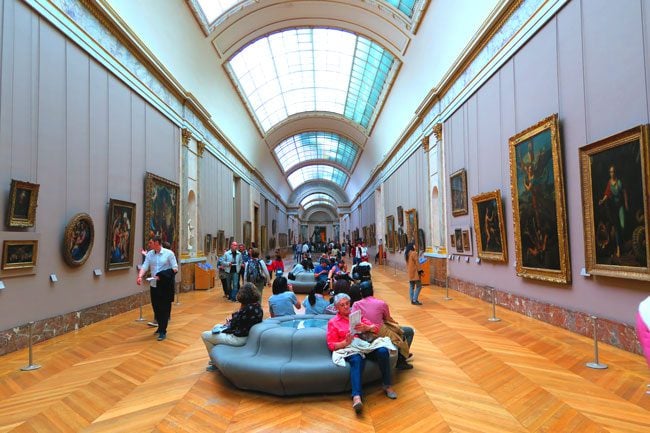
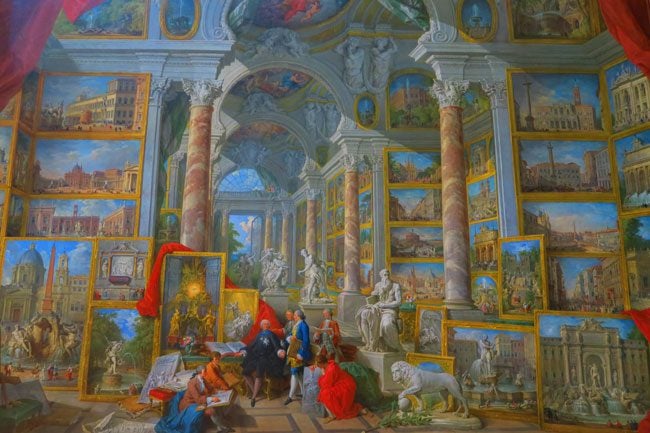
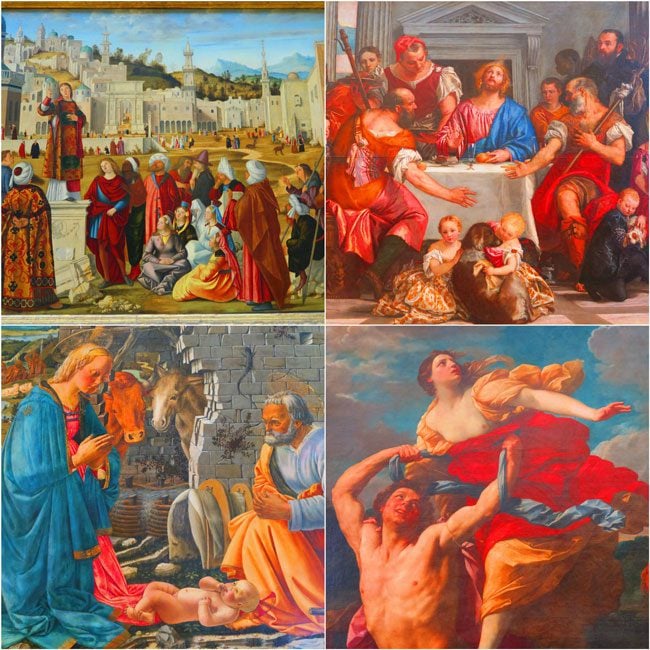
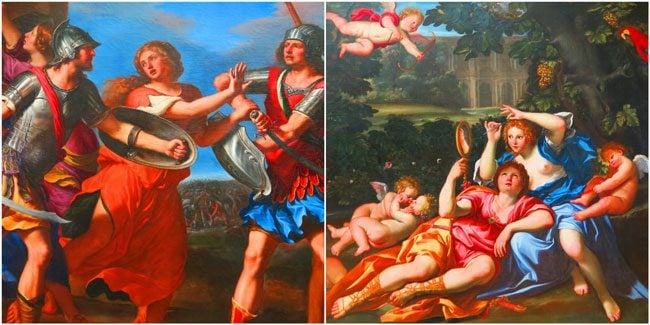
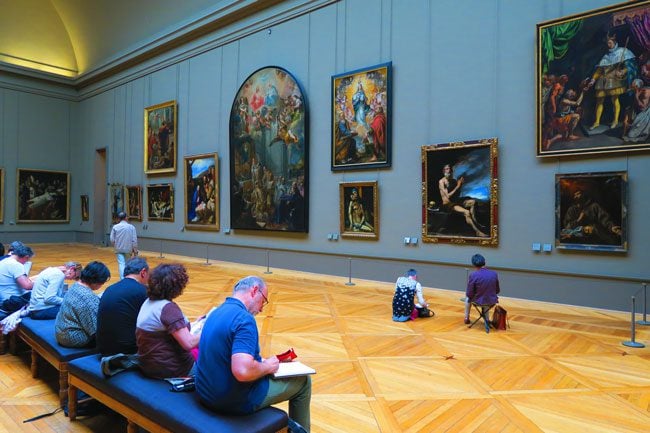
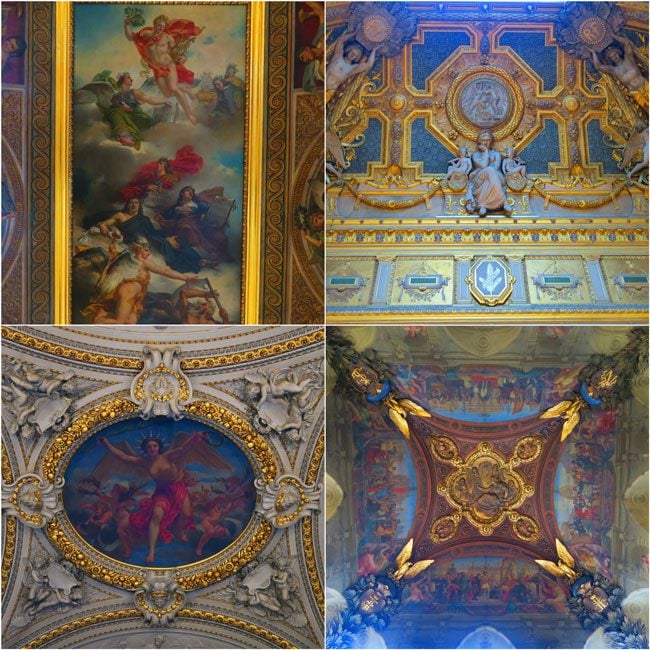
Don’t forget to venture inside room #6, where you’ll find none other than Leonardo da Vinci’s famous Mona Lisa, housed behind protective glass. I don’t want to spoil things for you since it is super cool to see the Mona Lisa, however, it’s definitely not the real highlight of your visit.
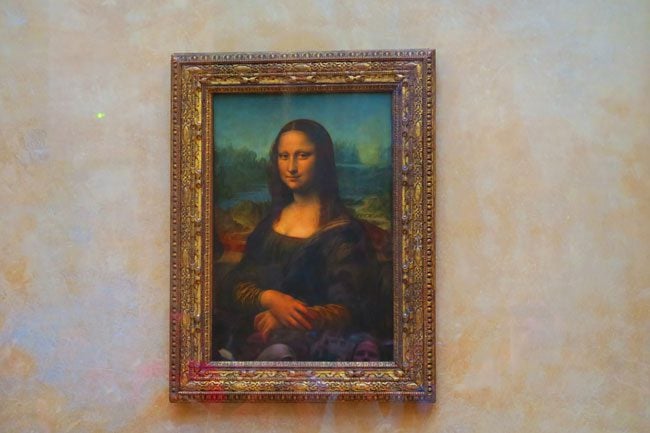
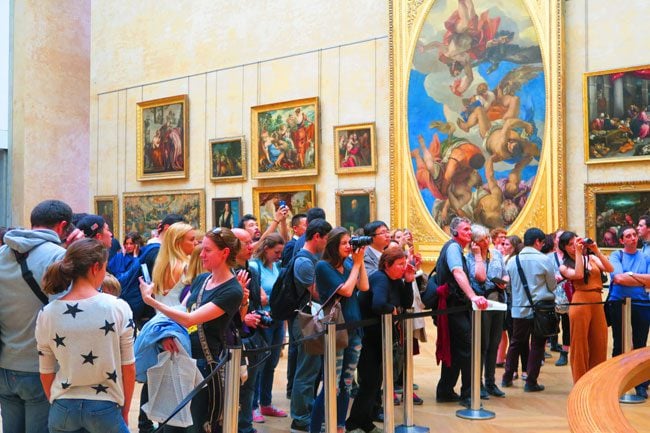
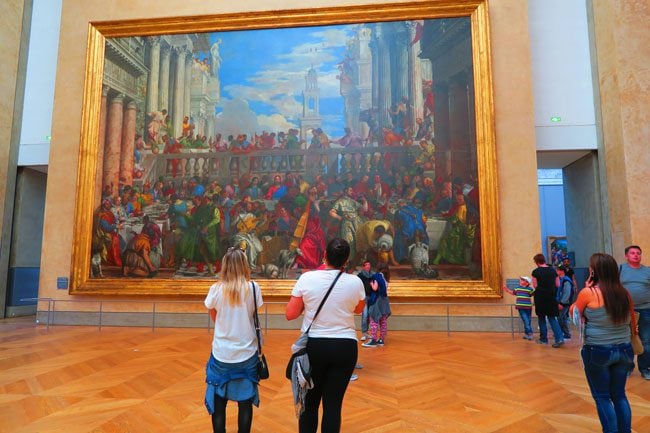
French Paintings
Running parallel to the Grande Galerie is another impressive set of halls, this time housing large-scale French paintings. I’ll let the pictures below do most of the talking but I can tell you that I was simply shocked at the sheer size of these works of art. You’ll find here paintings depicting the Napoleonic era as well as famous French Revolution works by Eugene Delacroix, one of my favorite painters who is buried in the ‘museum cemetery’ of Père Lachaise.
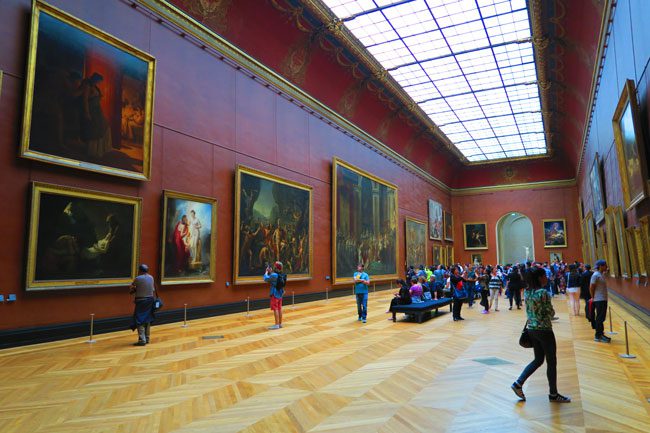
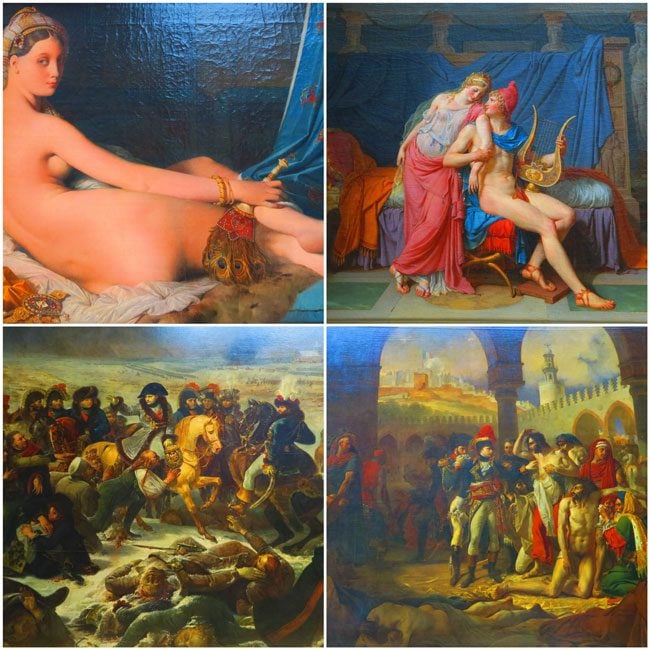
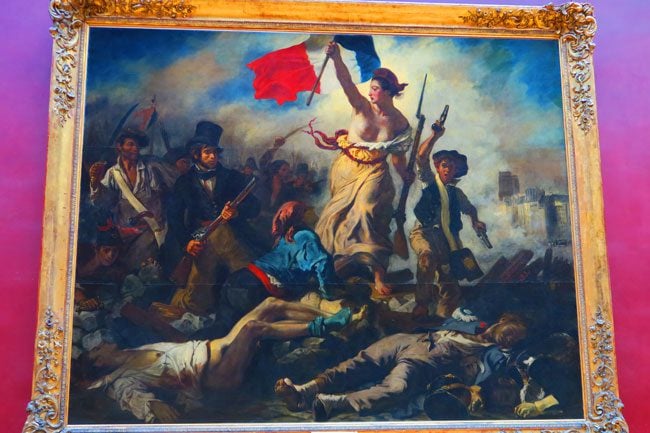
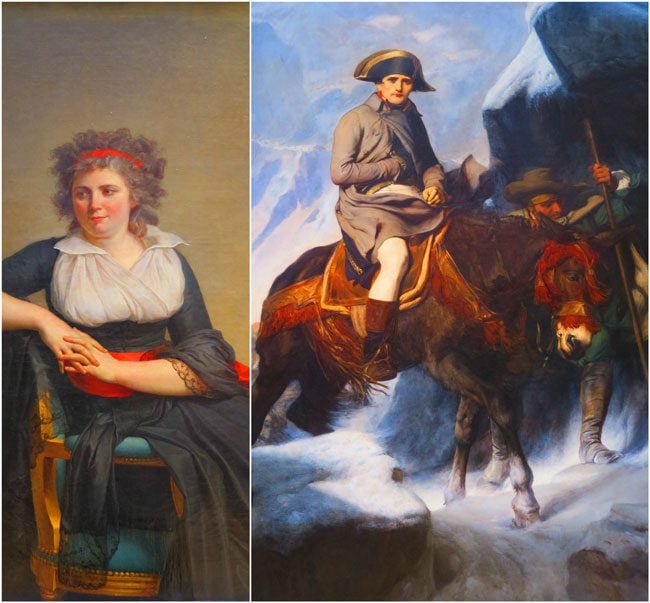
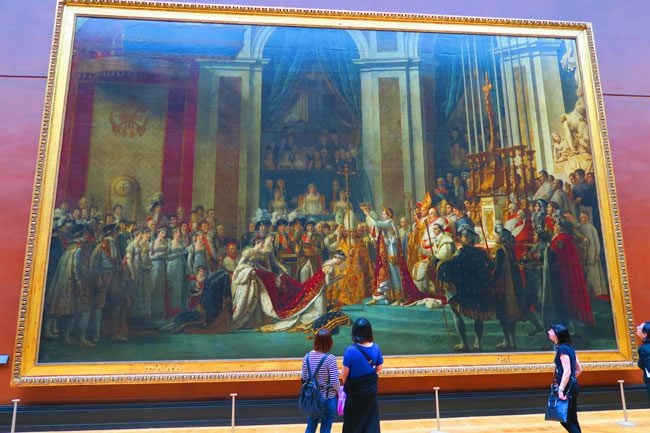
Spanish Paintings
A fine collection of Spanish paintings is not to be missed at the far end of the Grande Galerie. By now, you will have been treated to the Italian collection but keep going, as the Spanish collection is just as impressive and a lot of the crowd has already given up and drifted somewhere else.

Ancient Rome
In this section of the Denon wing, you’ll find a number of galleries lined with sculptures from Ancient Rome that eventually lead to a grand covered terrace that is home to wonderful mosaics, giant Roman columns, and massive sculptures.
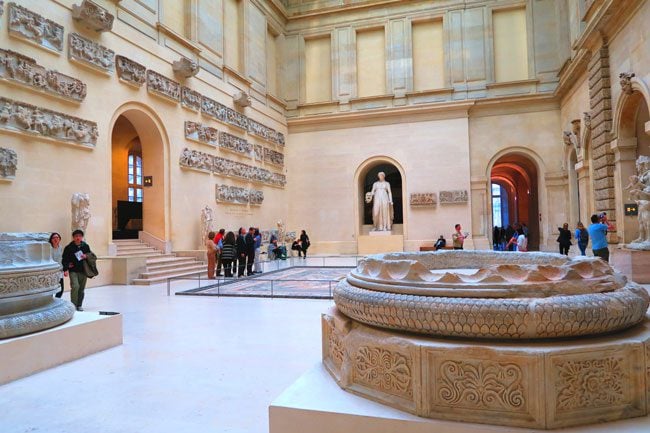
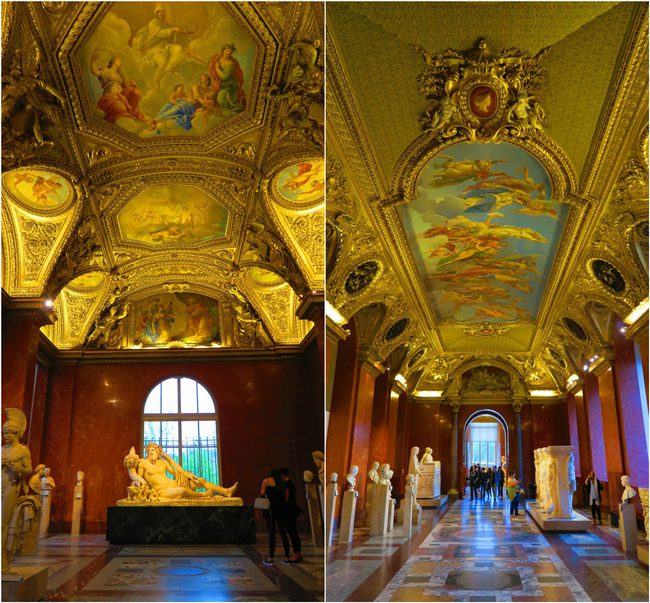
This section is also home to some of the most exquisite rooms in the Louvre. Be sure to visit the Apollo Gallery and whatever you do, don’t forget to look up or you might miss the fresco ceilings, decorated with the gold carving.
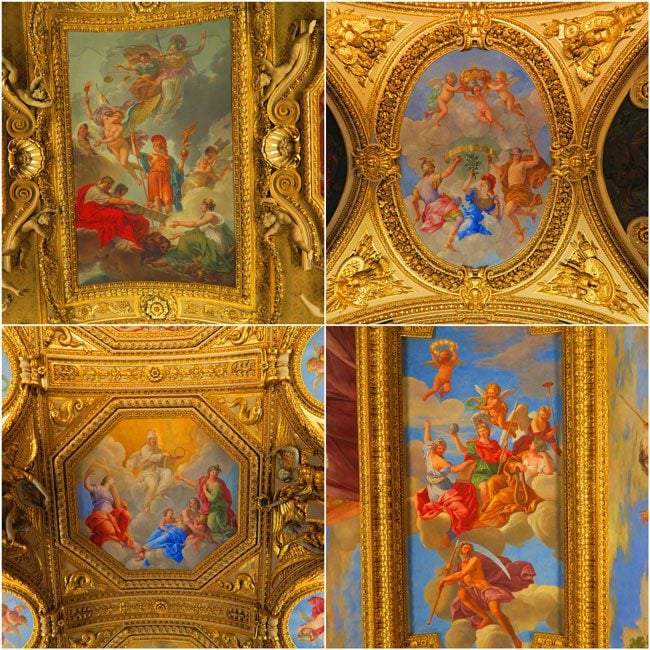
The Sully Wing
This is the center wing and is actually built like a small square. If you’ll choose to take on the monumental task of seeing the Denon and Richelieu wings, you’ll have to pass through the Sully wing. In any case, the Sully wing is mostly home to Greek antiquities, ancient Egyptian artifacts, Iranian art, French paintings, and the medieval remains of the fortress that stood prior to the construction of the Louvre (check it out on the lower ground floor). I’ll cover everything but the French paintings section, as the Louvre closed early on the day I visited the wing.
Greek Antiquities
Located on the ground and first floors of the Sully wing, you’ll find here a collection of sculptures, ceramics, and other impressive artifacts from Ancient Greece. The most impressive are the marble statues of the Greek Gods, with so much precision that it’s hard to imagine how folks back in the day could have done something like this!
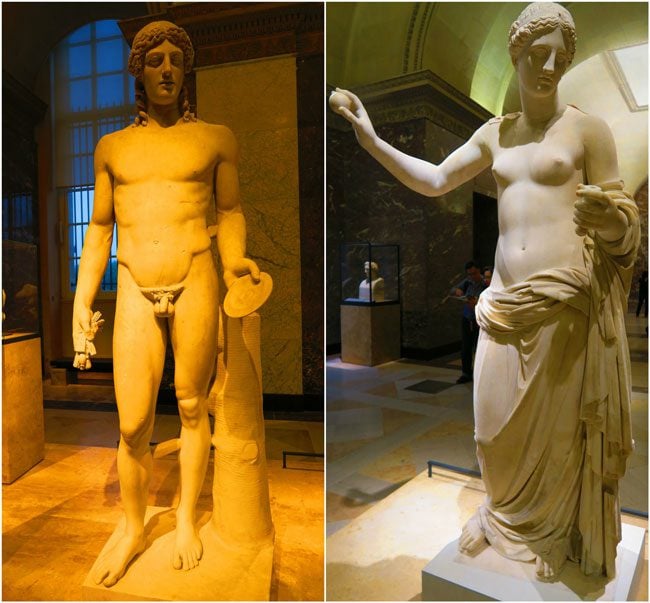
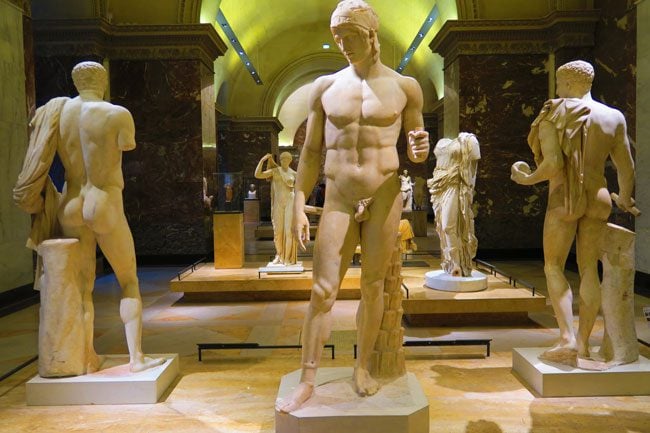
Ancient Egypt
The Louvre holds the finest collection of ancient Egyptian artifacts outside of Egypt. I can’t imagine that these treasures were the gift of Egypt to France but this is the legacy of centuries of former French domination.
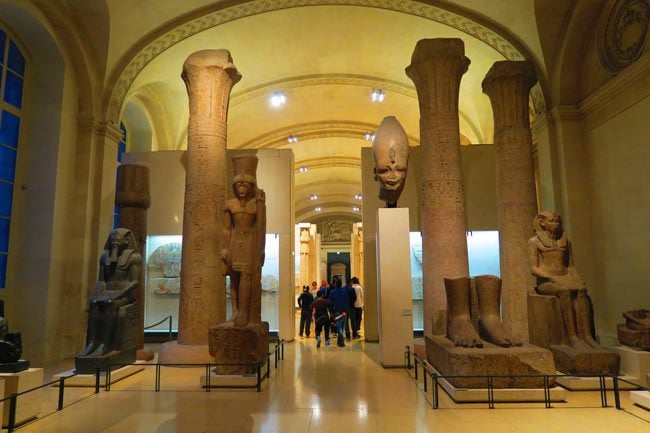
Be sure to check out the sphinx and the large collection of mummy tombs. Some of the artifacts here are unbelievably large and it’s hard to imagine how it was even shipped over here.
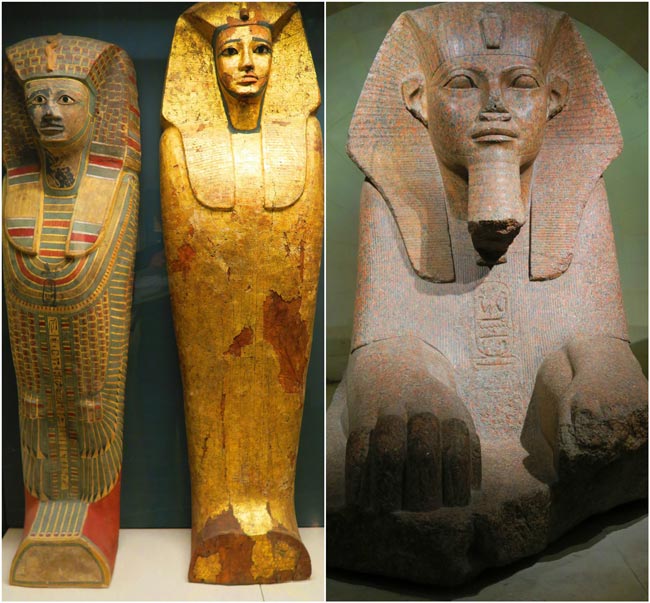
Easily missed but not to be missed are two small rooms: one contains ancient Egyptian hieroglyphics to help you brush up your foreign language skills while the other houses ancient paintings from thousands of years ago! Can you translate what they mean?
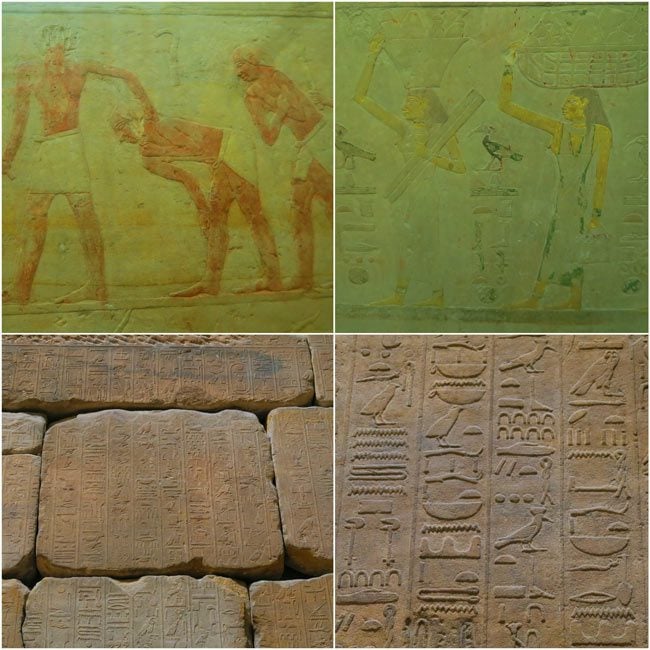
Ancient Iranian Art
The Iranian section is small but very unique. You’ll mostly find here large stone paintings made in small sections that are bound together to form large works of art.
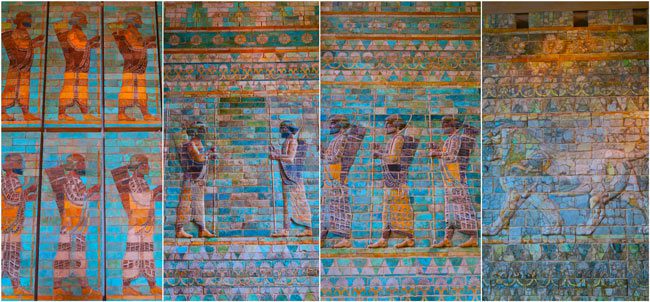
The Richelieu Wing
Not to be missed is the Richelieu wing, facing Rue de Rivoli. It’s probably the most diverse section of the Louvre so if you have but a few hours to spend, this is probably the best section of the museum to concentrate your efforts on. In the Richelieu wing, you’ll find French sculptures, German & Dutch paintings, the famous Napoleon III apartments, ancient Mesopotamia and an immense collection of ‘stuff’ from the French royal era.
Ancient Mesopotamia
Dubbed as the Near East section, this part of the Louvre is home to an amazing collection of small and large artifacts from Ancient Mesopotamia. The highlights of this section are the famous Hammurabi Code and the giant Assyrian bull sculptures at the reconstructed Library of Ashurbanipal.
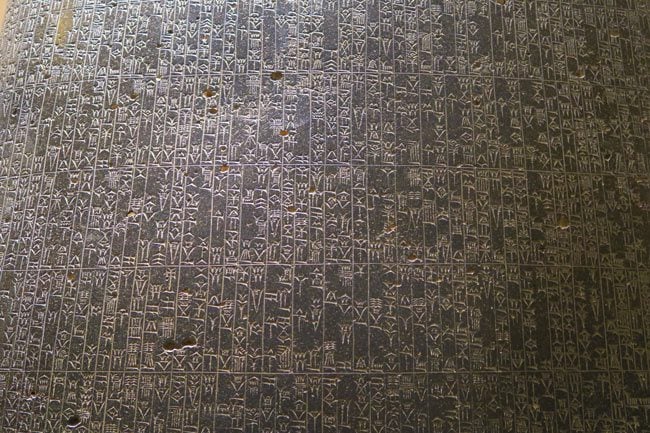
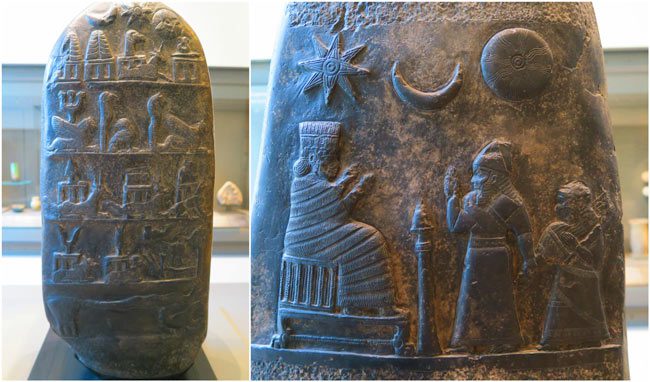
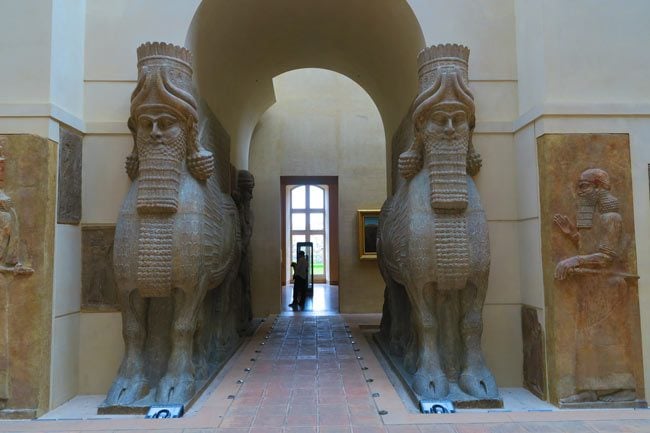

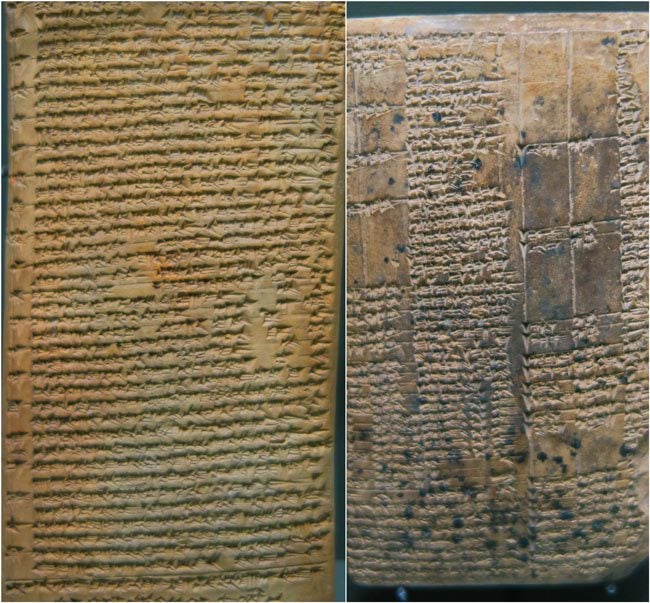
French Sculptures
One of the most special parts of the Louvre is actually two glass-covered courtyards (Cour Marly & Cour Puget), home to hundreds of French bronze and stone sculptures mostly depicting scenes from Greek & Roman mythology.

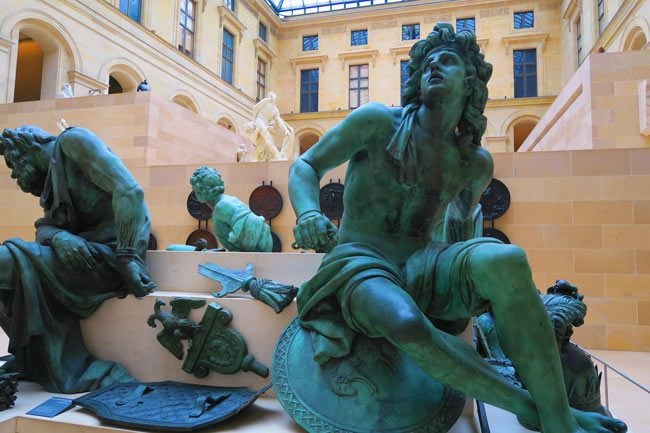
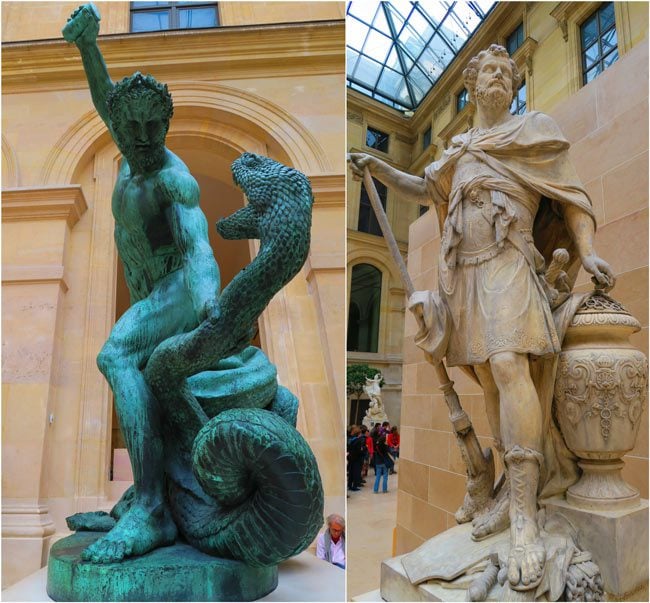
Not to be missed are the inner rooms just adjacent to the covered courtyards. Inside, the party continues, with an exquisite collection of… sculptures.

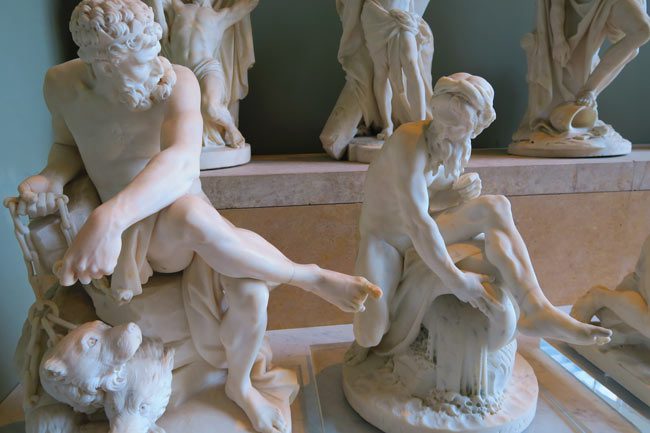
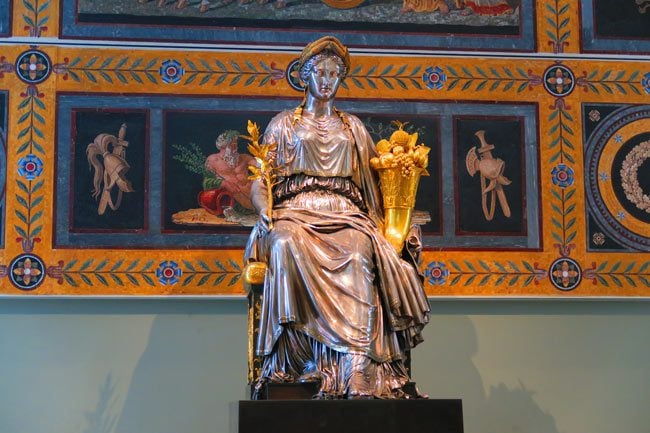
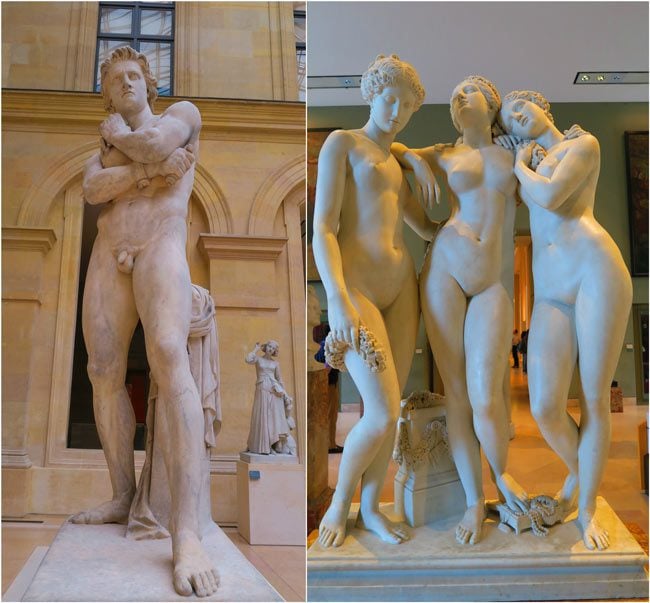
Royal Collection
Taking up the bulk part of the first floor in the Richelieu wing is a collection of ‘stuff’ from French royal times, including the Renaissance, Louis XIV, the 19th century and late dynasties. I use the term ‘stuff’ to describe this part of the Louvre because you’ll really find everything here, including complete rooms as they were back in the day, royal furniture, unbelievable tapestry, silverware & other household items as well as jewelry. Walking through this part of the Louvre will really give you a sense of what it was like to live like a royal back in the day, and probably why so many became agitated with the lavish lifestyle of the rich – agitated enough to start revolutions!
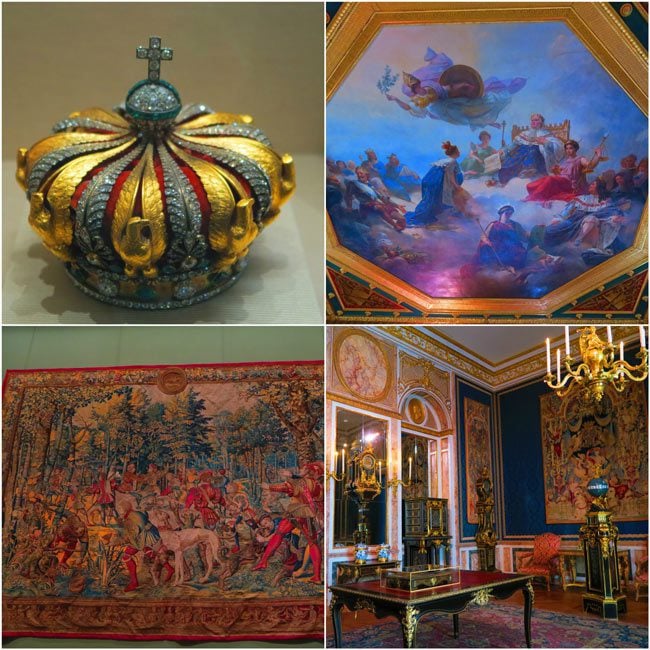

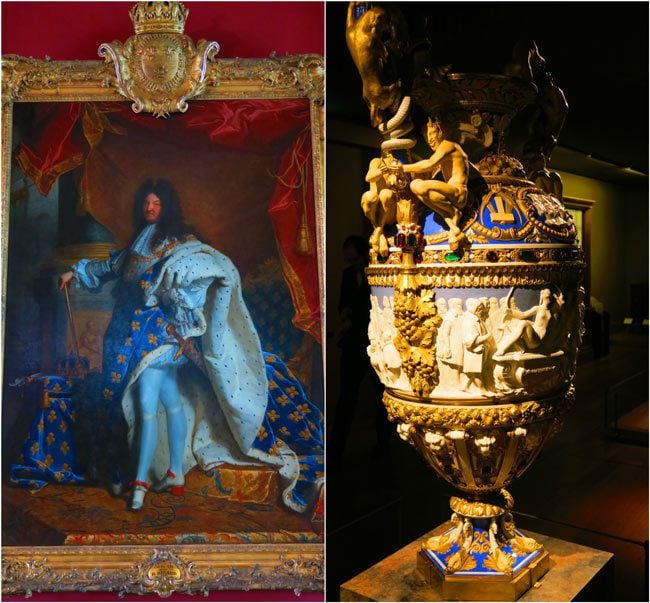
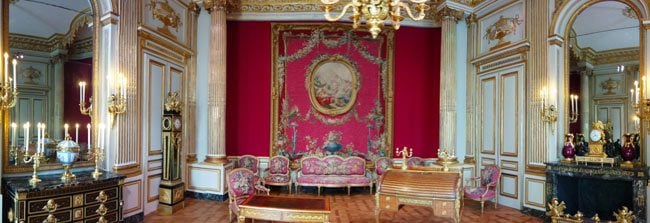
Napoleon III Apartments
By far the highlights of the Richelieu wing are the Napoleon III apartments, built for the emperor who reigned between 1852 to 1870 and who was tasked with the major facelift that Paris underwent. The apartments were built as a place to host foreign dignitaries but by the time it was complete, the empire had once again been overthrown.
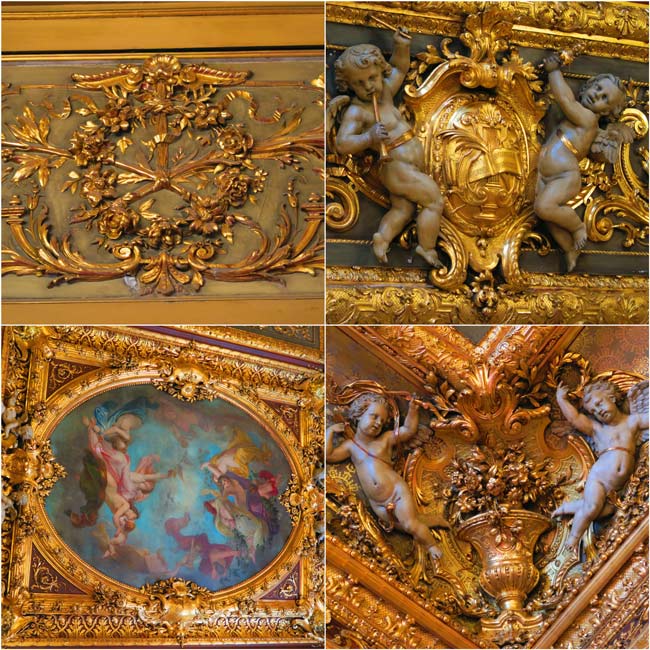
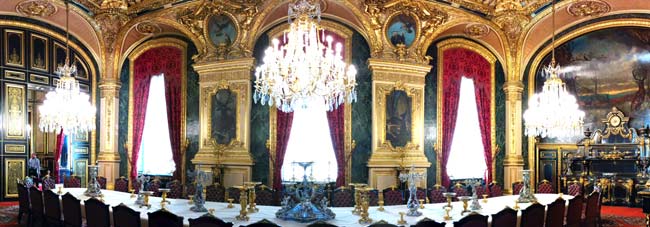
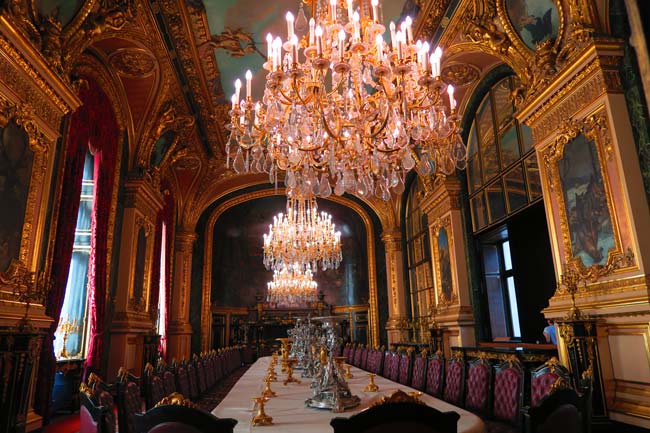
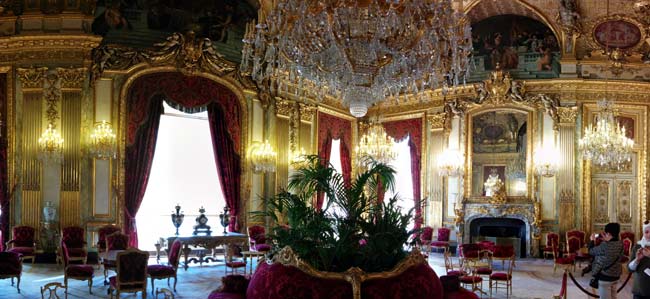
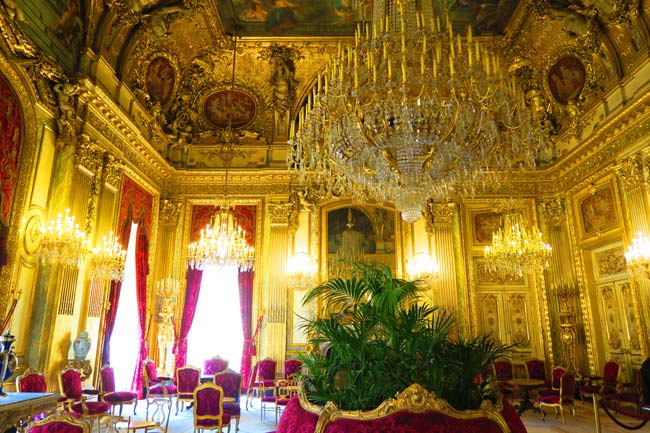
In Conclusion
What can I say? I can definitely understand why I put off visiting the Louvre for so long but I can’t understand why I only visited twice! The Louvre is like no other – not only due to its sheer size but more because of the infinite amount of treasures that it holds. It’s definitely one of the top things to see in Paris and I hope that this post answers to a certain degree the question of how to best see the Louvre.
What’s Next?
Plan the perfect trip to Paris with free and in-depth Paris travel guides, including the Best of Paris collection and a guide to all major Parisian neighborhoods.
